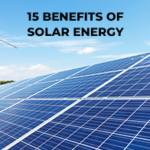Business Electricity Rates in the USA – Latest Commercial Electricity Rates
Electricity is one of the cornerstones of modern life and must be considered an asset in business. Business electricity rates constantly change, and understanding them can be challenging. In this article, “Us Energy Discounts” will provide an overview of current rates, factors that impact them, and ways businesses can save money when paying their bills.
What Are Business Electricity Rates in the USA?
Commercial electricity rates are prices charged to businesses for their electricity usage. They depend on many factors, including costs associated with producing, transmitting, and distributing it and local regulations, taxes, and fees imposed upon users. Commercial rates generally include a usage base rate and demand charges for peak usage during a billing cycle.
Recent Trends in Commercial Electricity Rates
Electricity costs vary significantly across states and regions in the U.S. depending on market conditions, weather patterns, environmental regulations, and environmental restrictions governing electricity.
Recent data show that overall business electricity rates in the U.S. have remained relatively steady over recent years, while some regions experienced fluctuation due to changes in their energy market.
Key Highlights of Electricity Prices in USA 2023
- The total average of revenues per Kilowatt-hour (kWh) rose by 10.8 percent from February. All four sectors saw growth in average annual revenues per kWh.
- In February, electricity demand was high within the Bonneville Power Administration (BPA) system, just 10% below the record.
- Net electricity production across the U.S. decreased by 5.1 percent in February 2023 compared to last year, as the warmer winter slowed the power demand.
Commercial electricity prices are less expensive than residential prices throughout the U.S. The lone exception is Washington, DC, where the retail rate is six percent more for retail consumers (15.91 cents/kWh) than for residential users (14.91 cents/kWh).
The state of New York has average commercial rates of less than 10 cents/kWh. In contrast, only six states have rates that exceed 20 cents/kWh.
Between January 2022 to January 2023, the business electricity rate climbed by the most in the states in the table below. All of them have seen price increases by more than 20 percent:
- Nevada (+39.04%)
- New Hampshire (+27.35%)
- North Carolina (+26.52%)
- Pennsylvania (+25.21%)
- Maryland (+24.81%)
- Delaware (+22.78%)
- Illinois (+21.00%)
- Connecticut (+20.81%)
- Hawaii (+20.28%)
Commercial kWh rates increased in all states except Wyoming, where rates fell by 2.21 percent.
New Hampshire and Utah have the lowest and highest industrial kWh rates of the 48 states that are contiguous, with the difference being 179%.
Factors Affecting Business Electricity Rates in the USA
1) Demand Charges
Businesses incur demand charges when their peak electric usage occurs within a given period, set by utility companies to help offset costs associated with maintaining their electric grid infrastructure. As demand charges increase, so do commercial power prices – thus contributing to rising business electricity prices.
2) Energy Consumption
Your business’ energy use directly correlates to commercial energy rates; as more power is consumed, so will rates. You can lower energy usage by investing in more efficient equipment and adopting power-saving techniques, like switching off lights when not needed and switching equipment off when not required.
3) Time of Use
Some utility companies in the USA provide businesses with time-of-use rates, whereby prices for electricity vary based on when power consumption occurs throughout the day. Prices typically increase during peak demand while dropping during off-peak consumption periods.
Thus saving money when shifting energy usage away from peak times and onto off-peak usage times. By changing when and how often power usage occurs, you could see savings.
4) Renewable Energy
Businesses of all kinds are turning towards renewable energies like solar or wind power as an economical and eco-friendly means of cutting their reliance on traditional sources and cutting costs for power usage.
In some states of the USA, businesses that generate their renewable energy may even sell excess power back onto the grid, which helps offset industrial energy prices.
5) Saving Money on Commercial Electricity Bills
Businesses can take several measures to lower their commercial energy costs, including:
- Energy-efficient appliances and lighting: Utilizing energy-saving appliances and lighting can significantly decrease a business’s power usage and electric bills, leading to significant savings on both sides.
- Renewable Energy Sources: Businesses can lower energy bills while decreasing their carbon footprint by switching to alternative energies like solar or wind power.
- Energy audits: Conducting regular energy audits can assist businesses in identifying areas in which they could lower power usage and save on bills.
- Negotiate rates: Businesses may negotiate with their energy provider to obtain lower rates or switch providers who offer less costly plans.
Conclusion
These rates fluctuate frequently, and keeping up can be challenging, making it hard for businesses to remain informed and take informed actions regarding how best to save money on their bills.
Acknowledging factors influencing business electricity prices will enable informed decision-making and decreased energy expenses – plus, going green can save businesses money and help reduce their carbon footprint. Businesses must remain up-to-date on current commercial energy prices while taking measures that minimize energy use and costs.





